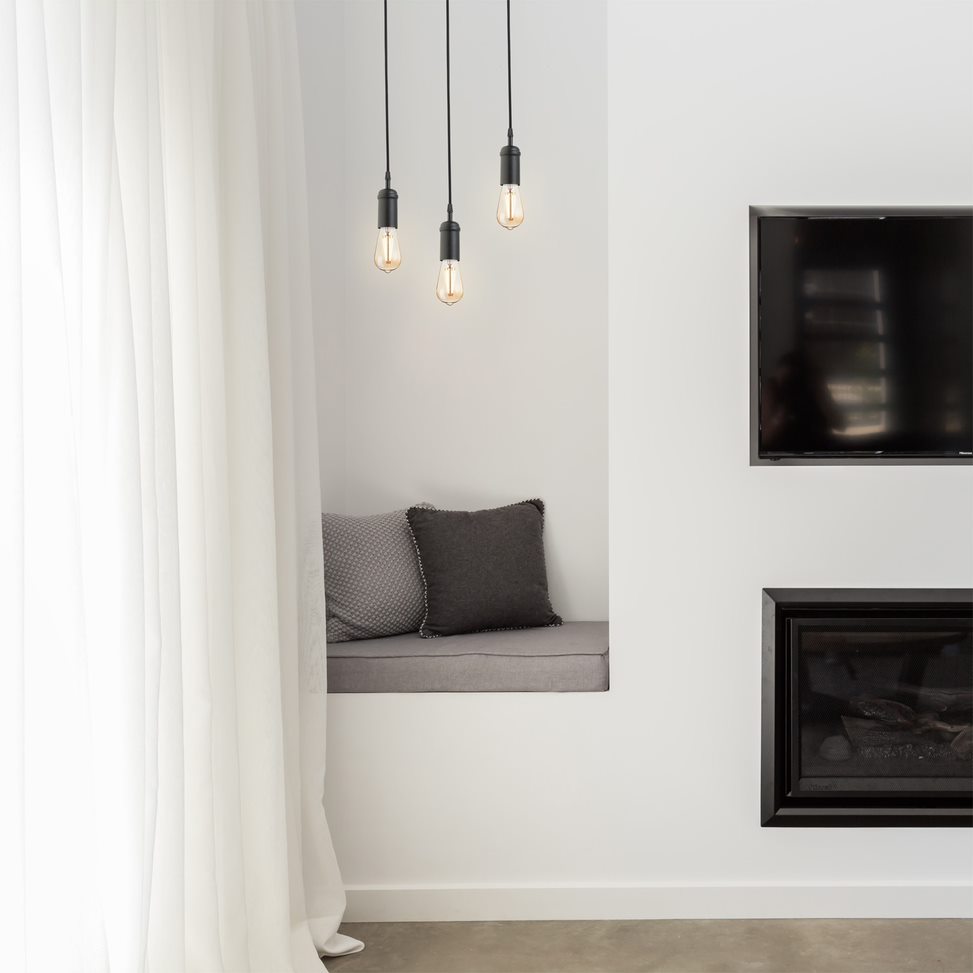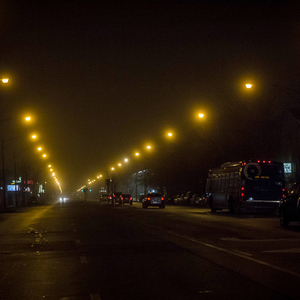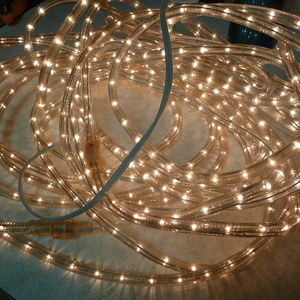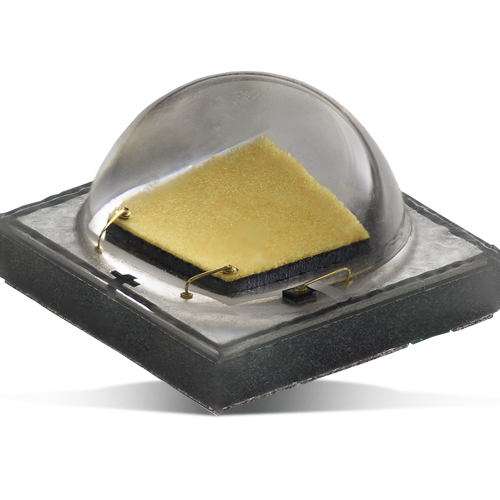
Image Credit: Dominic Alves / CC BY 2.0 / Flickr
The American Medical Association (AMA) has just adopted an official policy statement about street lighting: cool it and dim it.
The statement, adopted unanimously at the AMA’s annual meeting in Chicago on June 14, comes in response to the rise of new LED street lighting sweeping the country. An AMA committee issued guidelines on how communities can choose LED streetlights to “minimize potential harmful human health and environmental effects.”
Municipalities are replacing existing streetlights with efficient and long-lasting LEDs to save money on energy and maintenance. Although the streetlights are delivering these benefits, the AMA’s stance reflects how important proper design of new technologies is and the close connection between light and human health.
The AMA’s statement recommends that outdoor lighting at night, particularly street lighting, should have a color temperature of no greater than 3000° Kelvin (K). Color temperature (CT) is a measure of the spectral content of light from a source; how much blue, green, yellow and red there is in it. A higher CT rating generally means greater blue content, and the whiter the light appears.
A white LED at CT 4000°K or 5000°K contains a high level of short-wavelength blue light; this has been the choice for a number of cities that have recently retrofitted their street lighting such as Seattle and New York.
But in the wake of these installations have been complaints about the harshness of these lights. An extreme example is the city of Davis, California, where the residents demanded a complete replacement of these high color temperature LED street lights.
Can communities have more efficient lighting without causing health and safety problems?
Two problems with LED street lighting
An incandescent bulb has a color temperature of 2400°K, which means it contains far less blue and far more yellow and red wavelengths. Before electric light, we burned wood and candles at night; this artificial light has a CT of about 1800°K, quite yellow/red and almost no blue. What we have now is very different.
The new “white” LED street lighting which is rapidly being retrofitted in cities throughout the country has two problems, according to the AMA. The first is discomfort and glare. Because LED light is so concentrated and has high blue content, it can cause severe glare, resulting in pupillary constriction in the eyes. Blue light scatters more in the human eye than the longer wavelengths of yellow and red, and sufficient levels can damage the retina. This can cause problems seeing clearly for safe driving or walking at night.
You can sense this easily if you look directly into one of the control lights on your new washing machine or other appliance: it is very difficult to do because it hurts. Street lighting can have this same effect, especially if its blue content is high and there is not appropriate shielding.
The other issue addressed by the AMA statement is the impact on human circadian rhythmicity.
Color temperature reliably predicts spectral content of light – that is, how much of each wavelength is present. It’s designed specifically for light that comes off the tungsten filament of an incandescent bulb.
However, the CT rating does not reliably measure color from fluorescent and LED lights.
Another system for measuring light color for these sources is called correlated color temperature (CCT). It adjusts the spectral content of the light source to the color sensitivity of human vision. Using this rating, two different 3000°K light sources could have fairly large differences in blue light content.
Therefore, the AMA’s recommendation for CCT below 3000°K is not quite enough to be sure that blue light is minimized. The actual spectral irradiance of the LED – the relative amounts of each of the colors produced – should be considered, as well.
The reason lighting matters
The AMA policy statement is particularly timely because the new World Atlas of Artificial Night Sky Brightness just appeared last week, and street lighting is an important component of light pollution. According to the AMA statement, one of the considerations of lighting the night is its impact on human health.
In previous articles for The Conversation, I have described how lighting affects our normal circadian physiology, how this could lead to some serious health consequences and most recently how lighting the night affects sleep.
In the case of white LED light, it is estimated to be five times more effective at suppressing melatonin at night than the high pressure sodium lamps (given the same light output) which have been the mainstay of street lighting for decades. Melatonin suppression is a marker of circadian disruption, which includes disrupted sleep.
Bright electric lighting can also adversely affect wildlife by, for example, disturbing migratory patterns of birds and some aquatic animals which nest on shore.
Street lighting and human health
The AMA has made three recommendations in its new policy statement:
First, the AMA supports a “proper conversion to community based Light Emitting Diode (LED) lighting, which reduces energy consumption and decreases the use of fossil fuels.”
Second, the AMA “encourage[s] minimizing and controlling blue-rich environmental lighting by using the lowest emission of blue light possible to reduce glare.”
Third, the AMA “encourage[s] the use of 3000°K or lower lighting for outdoor installations such as roadways. All LED lighting should be properly shielded to minimize glare and detrimental human and environmental effects, and consideration should be given to utilize the ability of LED lighting to be dimmed for off-peak time periods.”
There is almost never a completely satisfactory solution to a complex problem. We must have lighting at night, not only in our homes and businesses, but also outdoors on our streets. The need for energy efficiency is serious, but so too is minimizing human risk from bad lighting, both due to glare and to circadian disruption. LED technology can optimize both when properly designed.
Richard G. ‘Bugs’ Stevens is a professor at the School of Medicine at the University of Connecticut. This post originally appeared at The Conversation.
Weekly Newsletter
Get building science and energy efficiency advice, plus special offers, in your inbox.















11 Comments
Correlation vs causation
I have a lot of problems with this. The study justifying this is a joke. People in urban areas get a little less sleep every night and the quality of sleep is lower. Urban areas have brighter streets. Therefore the street lights must be the cause? You could just as easily blame higher CO2 levels, more particulates in the air, louder noises, more feral cats, etc. This study does not show any link that blue light in street lights are disrupting people's sleep.
The claimed link to cancer is also doubtful. There was a study a few decades ago that showed nurses working night shift had a higher rate of breast cancer. I can believe this one. Their circadian rhythm was all messed up and it likely messed with a lot of stuff in their bodies. This study referred to nighttime lighting as the cause. Now, most people read nighttime lighting and think exterior lights, but this study was on nurses working indoors. Nighttime lighting was meant as lighting they were exposed to at night.
The poison is in the dose. Interior lighting is often at around 50fc for nursing areas. Parking lots and roads are typically lit to an average of 1 fc. The length of exposure is different too. 8 to 12 hours a night at 50fc vs maybe 1 hour at 1fc. That is 0.25% of the exposure level. Why is the AMA worrying about exterior lighting when they should be focused on interior lighting for people who work night shift. They should limit the amount of blue light indoors during nighttime hours.
And a side note about your first paragraph.
"The American Medical Association (AMA) has just adopted an official policy statement about street lighting: cool it and dim it."
"Cool" light is the type that has more of the blue colors, even though it has a higher Kelvin temperature. Cool light looks more like ice with the blue colors, warm light looks more like fire with the red colors.
Response to Bill Swanson
In an email to GBA, author Richard Stevens wrote, "Use of 'cool' to mean higher color temperature is strictly jargon in the lighting design community; it has no objective basis and is used because lighting people think high CCT lights 'look' like ice, or something. To me they look like the blue flame of an acetylene torch. In English, 'cool' means lower temperature, and I was writing for people who speak English."
I completely agree with Bill
I completely agree with Bill Swanson's criticism of the AMA position. However, from a completely subjective perspective, I would propose that the "warmer" light of 3000K (degrees Kelvin,) is much more pleasant and peaceful than the harsher "cold" light of 5000K and above for both outside lighting, but especially for indoor lights. Most outdoor LED lighting has until recently been the higher color temperature 5000K because it has been easier, thus cheaper to manufacture, and the efficacy has been higher than the warmer color temperatures.
Interestingly, this past year the City of Gloucester requested feedback from the public on the new LED streetlight replacements, and the decision was made to go to the warmer 3000K lights. And, though plenty bright enough, they are indeed much more pleasant on the streets than the "cold" 5000K ones had been.
IES & LRC already responded
I just noticed that the Illuminating Engineering Society (IES) and the Lighting Research Center (LRC) have both made public comments about this AMA announcement.
http://ies.org/emails/2016/june/ama-response.html
http://www.lrc.rpi.edu/resources/newsroom/pr_story.asp?id=320#.V4kyWnzru70
CCT vs. intensity
As much as I personally prefer <3000 k cct light, and even lower in the hour before going to bed, i think that bill is correct point out intensity exposure are more important.
Moonlight has a CCT over 4000 K. If that was a hazard we'd need to avoid going outside or having curtains open during a full moon. Oh, right, werewolves. Maybe LED lights attract werewolves.
But if we are going to have street lighting much brighter than moonlight, I would prefer <3000 k anyway.
I share Bill Swanson's skepticism
First, noontime sunlight on a bright day is about 5500k, cloudy sky is about 6500k and a clear blue sky is about 10000k. These color temperatures cause sickness and disrupt migratory patterns of birds? Second, North Americans tend to prefer warmer (more yellowish) indoor lighting than Japanese, for example. So color temperature preferences vary by culture. Third, the author completely omits any discussion of CRI (color rendering index) and its contribution to the quality of indoor light. CRI is the ability of a light source to reveal the colors of various objects faithfully in comparison with an ideal or natural light source. Many LED streetlamps have fairly good CRI (70 or better). Low pressure sodium street lights are horrible in this important respect (-44)! High pressure sodium is very poor (24).
Street lights
While we're discussing color temperature, we should also ask whether every light is really necessary at all. Out here in the middle of nowhere, Maine, there is an occasional street light, seemingly randomly located and pointless.
Well, every once in a while
Well, every once in a while while driving in poor conditions, I have thanked all that is Edison for some lone street light pointing out where the road is, so sometimes, random is OK
ISTR similar 'studies' on Sodium lighting. Maybe they are all correct and the change from mercury vapor[blue] street lighting to Sodium is really what lowered crime rates......
Lamp Covering
When you place a covering, such as a lampshade, over a lamp, does it change the color temperature of the light being emitted? If I had a CFL bulb with an orange covering, would my eyes receive the same color temperature as if the CFL bulb had no covering at all?
As an employee of Habitat for Humanity, we tell homeowners about a program in which they can receive CFL bulbs for free. And I'm wondering if there is any concern, should they outfit their houses with all CFL bulbs if it may play a part in disrupting circadian rhythm.
coverings can change CCT
Yes, a colored lamp shade can change the color temperature. You can also use filters, some of which are made for exactly that purpose for photography and stage lighting.
At the extreme end of the range one can get with that, I bought some red/orange theatrical "gels" (filters) and use them on 0.5 W LED night lights, as well using red LEDs for a bathroom night light. I find that less jarring if I have to turn on a light in the middle of the night.
You can buy CFLs and LEDs that match the color temperature of incandescents quite closely. If you are worried about the sleep disruption caused by artificial lighting, it is more important to encourage awarenesses and the use of dimmer lights approaching bedtime than to worry about the specific type of light.
I'm coming to this discussion several years too late. Nevertheless, I also found the author's use of "cool" to be strange in that context. From the title, I thought I was going to be reading a piece about how blue light prevents drug addicts from finding their veins and was therefore appealing for street lighting.
Language is a democracy, so technical accuracy rarely wins against wider public usage. As Home Depot uses "cool" to mean light that is more blue, I argue that the wider public understands it that way. The author is using jargon when he says "cool it" because it's technically accurate, but the opposite of the common usage. Also, how many people remember that Kelvin is a scale of temperature? I think most forget that when they leave eleventh grade.
https://www.homedepot.com/b/Lighting-Light-Bulbs-LED-Light-Bulbs/Cool-White/N-5yc1vZbm79Z1z0wujb?storeSelection=674,680,6634,1032,659&experienceName=default
Log in or create an account to post a comment.
Sign up Log in